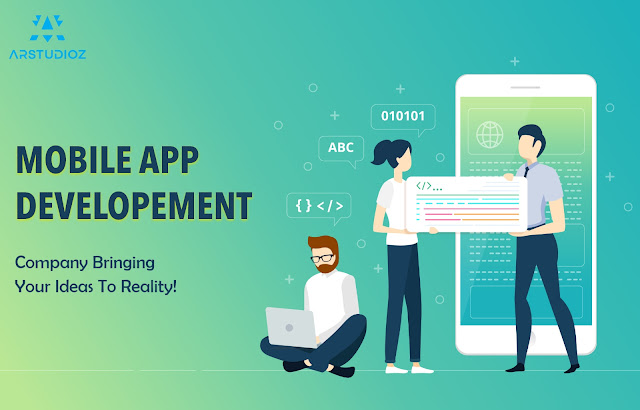How artificial intelligence can improve our quality of life?
Artificial intelligence is
one of the best fields of modern technology.
the power of computing has finally reached a point where artificial
intelligence can be taken out of science fiction movies and taken to real life.
In fact, you are probably interacting with some form of artificial intelligence
almost every day. Turn on those incredibly accurate Netflix recommendations, as
well as personalized search results when you type something on Google. While
still in its infancy, AI is slowly leaking into our daily lives. But AI has the
power to do more, much more, than to recommend which television program will
drown next. In the coming years and decades, artificialintelligence companies in india promise to transform the lives of citizens
around the world.
These are some of the key
ways in which artificial intelligence technology will shape the future, and how
it will not only provide super cool devices, but also improve the quality of
life for all of us:
Autonomous cars
According to BI
Intelligence, there will be 10 million driverless cars on the road by 2020.
Many cars that are already on the road today have automatic driving
characteristics, such as automatic parking or automatic breakage when a nearby
obstacle is detected. AI technology will be critical
to the success of autonomous vehicles (AV). Cars will need to react to new
situations as they arise along the way, not only similar to a human, but better
than a human. And unlike humans, autonomous cars can immediately share their
learning with other connected cars. With a powerful AI taking the proverbial
(and literal) wheel, researchers believe that eventually the AV will be 90
percent safer than human drivers. This life-saving technology cannot come soon
enough. Beyond increasing general public safety, VAs will improve the quality
of life of people who otherwise could not drive, such as the elderly or people
with certain disabilities. For a blind person to take a solo trip through
public transportation today, a lot of planning is required. With AVs on the
road, someone with visual impairment could simply talk on the phone or another
device, take a trip and reach their destination.
End poverty
The same technology that
offers personalized ads on your Facebook page can also be the key to ending widespread
poverty. One of the biggest problems in the fight against poverty is simply
knowing where it occurs. In countries such as the United States, there are
surveys and census data that help detect poor areas, but the collection of such
data is prohibitively slow and difficult in underdeveloped countries.
Cue AI.
A Stanford economist,
Marshal Burke, began experimenting by letting AI discover where the highest
levels of poverty exist. His team had already been using night satellite images
to search for areas with high levels of poverty, with the idea that areas with
a lot of light activity at night correlate with economic activity. The areas
where they knew that people lived but were dark at night were potentially
affected by poverty. But there were still many gaps in your data collection. The
answer? They fed satellite images of a computer program from underdeveloped
countries in Africa and ordered him to look for signs of economic activity
during the day and night. The program began collecting clues that researchers
would never have noticed, such as agricultural regions, bodies of water and
other patterns that the human eye would never have caught. The model proved to
be 81-99 percent more effective in predicting areas of poverty than its
previous method of data collection.
Education
In the United States,
there is a widening gap between high school graduation rates and college
tuition between rural and urban students.
teachers went on strike in at least three states due to a shortage of
textbooks, impaired facilities and stagnant salaries. Artificial intelligence
could be the key to easing the burden of teachers today, while increasing
access to meaningful education for students. Rural students who are neglected
could use AI programs to complete certain learning courses. Imagine a small
child who lives on an isolated farm with his parents who should help with the
daily demands of the family farm. Simply getting to school is a challenge for a
child in this situation, and high-speed Internet access can also be a problem.
What would happen if the state could deliver a device with an AI educational
software already installed? This immediately removes many of the obstacles for
the child and ensures that he will receive an education on par with other
children his age in urban areas.
The biggest investment for
your money
While some of these
applications for artificial intelligence may seem distant, many of them are
already being implemented. But it is still early, and now is the time to ensure
that investments are made in areas where this technology can have the greatest
impact. Whatever the artificial intelligence tools used by governments, policy
makers and humanitarian organizations, it is important to implement the
technologies in which they will do more good.



Comments
Post a Comment